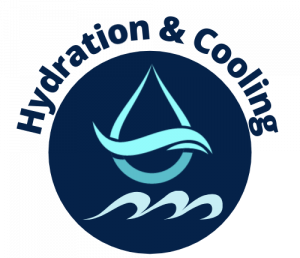Creating the Ultimate Football Hydration Station
A well-designed hydration station is more than just a water cooler on the sideline. It’s a critical component of your team’s performance infrastructure that can make the difference between maintaining peak performance and suffering from preventable fatigue and cramps during crucial game moments.
Modern football hydration solutions need to accommodate multiple athletes quickly while providing various hydration options tailored to different needs during practice and games.
Essential Components of an Effective Hydration Station
Core Equipment
- Water Coolers and Dispensers: High-capacity coolers that can serve an entire team without frequent refills
- Sports Drink Stations: Separate dispensers for electrolyte-replacement drinks
- Individual Bottles: Personalized or numbered bottles to prevent cross-contamination
- Bottle Carriers: For efficient transport and organization
- Ice and Cooling Systems: To maintain optimal beverage temperature
Supplementary Elements
- Shade Structures: Canopies or tents to keep the station and players cool
- Portable Tables: For organized layout of hydration materials
- Signage: Educational reminders about proper hydration practices
- Sanitization Supplies: For maintaining hygiene standards
Strategic Setup and Layout
The physical arrangement of your hydration station impacts its effectiveness. Consider these factors:
Location Considerations
- Accessibility: Position stations for quick access during breaks
- Multiple Stations: For larger teams, establish several smaller stations to prevent crowding
- Field Proximity: Balance convenience with safety (keeping equipment off playing surfaces)
- Weather Protection: Shelter from sun, wind, and rain
Traffic Flow
Design your station with efficient player movement in mind. Create a one-way flow where players can grab drinks without creating bottlenecks, especially important during brief timeouts when the entire team needs rapid hydration.
Hydration Options and Customization
Different players have different hydration needs based on their position, body composition, sweat rate, and personal preferences.
Beverage Variety
- Water: The foundation of any hydration program
- Electrolyte Drinks: For replacing minerals lost through sweating
- Protein Recovery Options: For post-game muscle repair
- Individual Supplements: Space for players to add personal electrolyte mixes or supplements
Temperature Considerations
Research shows that athletes consume more fluids when they’re at optimal temperatures. In hot weather, cold drinks (40-50°F) encourage better hydration, while in cold weather, room temperature or slightly warm options may be more appealing.
Maintenance and Management
Effective hydration stations require ongoing attention to maintain sanitary conditions and operational efficiency.
Regular Cleaning Protocols
- Daily sanitization of all dispensers and bottles
- Weekly deep cleaning of all equipment
- Proper storage between uses
Staff Responsibilities
Designate specific team personnel to monitor and maintain the hydration station. This includes refilling containers, ensuring proper temperature, monitoring supply levels, and enforcing hygiene protocols.
Hydration Station Integration with Team Protocols
The most effective hydration stations are those that integrate seamlessly with your team’s overall hydration strategy.
Pre-hydration
Set up your station to facilitate pre-practice and pre-game hydration protocols, with clear guidance on what players should consume before physical activity.
During Activity
Structured hydration breaks should be part of every practice plan, with players knowing exactly when and how much to drink during these intervals.
Post-activity Recovery
Your station should include dedicated recovery options that players can access immediately following intense exercise when rehydration is most critical.
Technology Integration
Modern football hydration stations increasingly incorporate technology to optimize player hydration:
- Hydration Tracking Systems: Digital monitoring of individual fluid intake
- Personalized Hydration Plans: QR codes or digital displays showing player-specific recommendations
- Automated Dispensers: Touch-free systems that reduce contamination risk
- Temperature Control Technology: Systems that maintain optimal beverage temperatures regardless of ambient conditions
Seasonal Adjustments
Your football hydration station should adapt to changing environmental conditions throughout the season.
Hot Weather Configurations
- Increased water and electrolyte supply
- Enhanced cooling capabilities (more ice, refrigeration)
- Additional shade structures
- Misting systems for player cooling
Cold Weather Setups
- Insulated containers to maintain temperature
- Warm hydration options (sports drinks at room temperature)
- Sheltered station locations to block wind
- Heating elements when necessary
Educational Components
The most effective hydration stations also serve as educational tools. Consider incorporating:
- Hydration Charts: Visual guides showing optimal urine color
- Sweat Rate Information: Guidelines for replacing individual fluid losses
- Timing Reminders: When to hydrate before, during, and after activity
- Nutrition Integration: How hydration works with proper fueling
Budget Considerations and Scaling Options
Hydration stations can be developed at various price points:
Essential Setup (Budget-Friendly)
- Basic water coolers and team water bottles
- Simple folding table with cooler organization
- Manual tracking systems for hydration compliance
Advanced Systems
- Custom-built mobile hydration carts
- Digital monitoring and personalization technology
- Branded equipment with team logos
- Multiple specialized beverage options
Conclusion: Building Your Team’s Hydration Headquarters
A thoughtfully designed football hydration station represents an investment in player health, safety, and performance. By considering the elements outlined above, you can create a system that not only meets your team’s basic hydration needs but actively enhances recovery, prevents injury, and optimizes athletic performance.
Remember that the best hydration stations evolve over time based on player feedback, coaching observations, and emerging best practices in sports nutrition and hydration science. Start with the core elements that fit your budget and team culture, then refine and expand your approach as you identify specific needs and opportunities for improvement.
The effort put into creating an effective hydration station will pay dividends on the field where proper hydration translates directly to maintained performance, reduced cramping, better endurance, and sharper mental focus during critical game situations.
